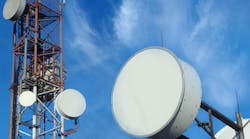The 60-GHz band has generated significant interest for new wireless solutions because of its available unlicensed bandwidth. In recent years, it’s led to the study of various antenna designs for millimeter-wave applications. However, when measuring these antennas, the actual results often differ from simulated results. That prompted a group of researchers from the Eindhoven University of Technology in the Netherlands to investigate the factors that cause these discrepancies. In a paper, the researchers present a detailed analysis of interfering radiation from the probe body. A new configuration is proposed that allows radiation-pattern measurements in the 60-GHz band to closely match simulation results.
A millimeter-wave anechoic chamber was designed and built to perform antenna measurements. An antenna-under-test (AUT) was selected to investigate the effects of the test environment as well as the probe. It was determined that measurement setups are a major contributing factor to differences between measured and simulated results.
To demonstrate this, the probe radiation was simulated and later measured. Additional simulations were performed, which concluded that the probe body strongly affects the radiation pattern. To reduce the effects of the probe body, the setup was modified to support a probe with an alternative feed construction. This probe configuration was then incorporated into the simulation model. The simulated radiation-pattern results from the new model are given. In addition, the radiation pattern was measured with the modified setup. See “The Influence of the Probe Connection on mm-Wave Antenna Measurements,” IEEE Transactions on Antennas and Propagation, September 2015, p. 3,819.
